Top Essay Writers
Our top essay writers are handpicked for their degree qualification, talent and freelance know-how. Each one brings deep expertise in their chosen subjects and a solid track record in academic writing.
Simply fill out the order form with your paper’s instructions in a few easy steps. This quick process ensures you’ll be matched with an expert writer who
Can meet your papers' specific grading rubric needs. Find the best write my essay assistance for your assignments- Affordable, plagiarism-free, and on time!
Posted: September 21st, 2023
A pathogen is a microorganism capable of causing infections diseases or illness to its host. Viruses thrive in various environments such as air, surfaces and soil.
Many viruses gain entry via the respiratory route. Airborne pathogens such as the common cold (rhinovirus) and influenza, passed on from human to human, become suspended in the tiny droplets from the nose during sneezing and then travel down into the alveoli of the lungs of its new host. Food borne pathogens such as bacillus cereus can cause severe vomiting and diarrhoea and even death if dehydration is extreme. This kind of bacteria multiplies quickly in room temperature. The symptoms caused by bacillus cereus are similar to those caused by staphylococcus aureus though it can also be transmitted via the skin.
We hear “Can you write in APA or MLA?” all the time—and the answer’s a big yes, plus way more! Our writers are wizards with every style—APA, MLA, Harvard, Chicago, Turabian, you name it—delivering flawless formatting tailored to your assignment. Whether it’s a tricky in-text citation or a perfectly styled reference list, they’ve got the skills to make your paper academically spot-on.
|
Features |
Virus (Eukaryotic) Are Paper Services Legal?Yes, completely! They’re a valid tool for getting sample papers to boost your own writing skills, and there’s nothing shady about that. Use them right—like a study guide or a model to learn from—and they’re a smart, ethical way to level up your grades without breaking any rules. |
Bacteria (Prokaryotic) |
Fungus How Much for a Paper?Prices start at $10 per page for undergrad work and go up to $21 for advanced levels, depending on urgency and any extras you toss in. Deadlines range from a lightning-fast 3 hours to a chill 14 days—plenty of wiggle room there! Plus, if you’re ordering big, you’ll snag 5-10% off, making it easier on your wallet while still getting top-notch quality. (Eukaryotic) |
Protozoa (Eukaryotic) |
|
Cell Type Will Anyone Find Out I Used You?Nope—your secret’s locked down tight. We encrypt all your data with top-tier security, and every paper’s crafted fresh just for you, run through originality checks to prove it’s one-of-a-kind. No one—professors, classmates, or anyone—will ever know you teamed up with us, guaranteed. |
Acellular |
Unicellular |
Muticellular |
Unicellular/multicellular Do You Rely on AI?Not even a little—our writers are real-deal experts with degrees, crafting every paper by hand with care and know-how. No AI shortcuts here; it’s all human skill, backed by thorough research and double-checked for uniqueness. You’re getting authentic work that stands out for all the right reasons. |
|
Structure |
Nucleic acid (RNA, DNA), protected by a protein coat or capsid rather than a nucleus. Occasionally have a further lipid membrane surrounding them. |
Thick peptidoglycan layer outside the cell membrane for rigidity, a semi-permeable plasma membrane. Flagella or pili enabling movement in liquid. |
Filamentous, hypha bound by firm, chitin containing walls. Network of hyphae forms the mycelium. Why Are You Top for Research Papers?Our writers are Ph.D.-level pros who live for nailing the details—think deep research and razor-sharp arguments. We pair that with top plagiarism tools, free revisions to tweak anything you need, and fast turnarounds that don’t skimp on quality. Your research paper won’t just shine—it’ll set the bar. |
One celled animals. No cell wall, have pellicle instead |
|
Organelles |
Do not contain a nucleus |
Range of ribosomes. No recognisable organelles. Who’s Behind My Essays?You’re in good hands with degree-holding pros—many rocking Master’s or higher—who’ve crushed our tough vetting tests in writing and their fields. They’re your partners in this, hitting tight deadlines and academic standards with ease, all while tailoring every essay to your exact needs. No matter the topic, they’ve got the chops to make it stellar. |
Nuclei, mitochondria, ribosomes, gogli and membrane bound vesicles. |
Many organelles and at least one nucleus |
|
Structure/ Shapes |
Complex helical, polyhedral Is My Paper Original?100%—we promise! Every paper’s written fresh from scratch—no AI, no copying—just solid research and proper citations from our expert writers. You can even request a plagiarism report to see it’s 95%+ unique, giving you total confidence it’s submission-ready and one-of-a-kind. |
Spherical (cocci) (streptococcus), rods (bacilli) (salmonella) and spiral (spirochetes) |
Tubular, yeasts, moulds |
Many including flagellates, amoebas, ciliates |
|
Growth / Replication Can You Do Any Citation Style?Yep—APA, Turabian, IEEE, Chicago, MLA, whatever you throw at us! Our writers nail every detail of your chosen style, matching your guidelines down to the last comma and period. It’s all about making sure your paper fits academic expectations perfectly, no sweat. |
Attachment: Binds to host cell Penetration: virus inserts own genome (nucleic acid) into the host cell (latent phase) Encoating: Virus takes over control of the cells metabolism. Viral genome is replicated using nucleotides from the host cell. Assembly: virus particles are created when the nucleic acids are enveloped in the protein coats (capsids) Can I Adjust Instructions Later?Absolutely—life happens, and we’re flexible! Chat with your writer anytime through our system to update details, tweak the focus, or add new requirements, and they’ll pivot fast to keep your paper on point. It’s all about making sure the final draft is exactly what you need, no stress involved. Release: Virus completely invaded host cells and destroyed them, (lysis) |
Binary fission- rapid asexual reproduciton |
Spores allow fungi to spread Mycelium exploits a substrate followed by asexual/or sexual reproduction |
Binary fission, budding and multiple fission. How Do I Get Started?It’s super easy—order online with a few clicks, then track progress with drafts as your writer works their magic. Once it’s done, download it from your account, give it a once-over, and release payment only when you’re thrilled with the result. It’s fast, affordable, and built with students like you in mind! |
Word Count: 204
TAQ 2
Stop the spread now! Cholera is an acute diarrheal disease which can rapidly result in profound, progressive dehydration and death. Native to the Ganges in India it is widespread in parts of Africa and South America. Cholera is caused by the gram-negative, comma-shaped organism V.cholerae.
We can crank out a killer paper in 24 hours—quality locked in, no shortcuts. Just set your deadline when you order, and our pros will hustle to deliver, even if you’re racing the clock. Perfect for those last-minute crunches without compromising on the good stuff.
Infection and spread
Cholera is referred to as a classic water borne disease, however it is also transmitted via contaminated food, drink and by hand-mouth contact (faecal –oral route) when the organisms are ingested. The disease easily and rapidly spreads in situations of poor sanitation, over-crowding such as refugee camps and in situations when water becomes contaminated.
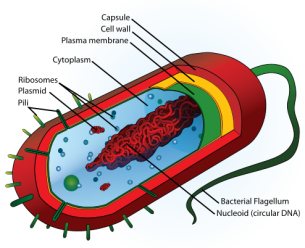 Cholera Cell
Cholera Cell
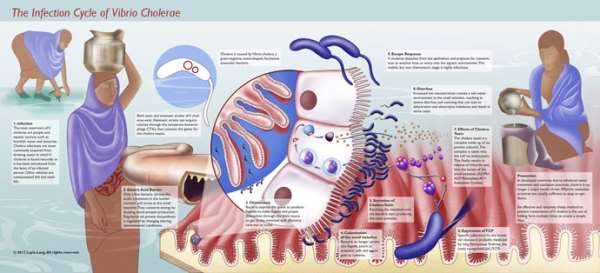 Image drawn from sciene-art. [online] Available at: http://www.science-art.com/image/?id=5302&pagename=The_Infection_Cycle_of_Vibrio_cholerae
Image drawn from sciene-art. [online] Available at: http://www.science-art.com/image/?id=5302&pagename=The_Infection_Cycle_of_Vibrio_cholerae
Symptoms
For sure! Our writers with advanced degrees dive into any topic—think quantum physics or medieval lit—with deep research and clear, sharp writing. They’ll tailor it to your academic level, ensuring it’s thorough yet easy to follow, no matter how tricky the subject gets.
Gastrointestinal infections such as cholera present a number of symptoms. The cardinal features which would prompt immediate medical attention include: watery diarrhoea (due to the action of the cholera peptide toxin), excessive vomiting, severe dehydration and abdominal pain.
Treatment
Commence immediate oral-rehydration therapy with sugar or starch, water and electrolytes. This will massively reduce the risk of mortality. Antibiotics can help patients recover quicker and decrease diarrhoeal purging.
Prevention
Ensure safe water supply, improve sanitation, ensuring food is safe for consumption through correct food handling procedures. Encourage cooking at high temperatures to kill bacteria and education on the disease through community outreach work.
We stick to your rubric like glue—nailing the structure, depth, and tone your professor wants—then polish it with edits for that extra shine. Our writers know what profs look for, and we double-check every detail to make sure it’s submission-ready and grade-worthy.
Word count: 207
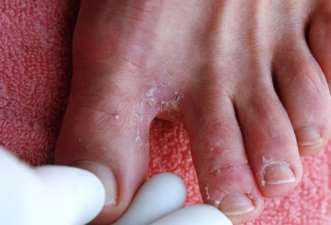 Image drawn from Boots WMD. [Online] Available at: http://www.webmd.boots.com/foot-care/athletes-foot-tinea-pedis
Image drawn from Boots WMD. [Online] Available at: http://www.webmd.boots.com/foot-care/athletes-foot-tinea-pedis
Athlete’s Foot also called Tinea Pedis is a mildly contagious, common fungal skin infection causing superficial skin damage and discomfort.
Infection and spread
Send us your draft and tell us your goals—we’ll refine it, tightening arguments and boosting clarity while keeping your unique voice intact. Our editors work fast, delivering pro-level results that make your paper pop, whether it’s a light touch-up or a deeper rework.
The fungi thrive in moist warm environments and feed on keratin, a protein found in hair, nails and skin. Spread by skin to skin contact, sharing towels or walking barefoot through changing rooms. The fungi can spread in environments such as leisure centres because of the moist, warm climate.
Symptoms
Skin around the little toes becomes red, itchy and scaly. It can spread quickly to all of the toes on both feet. Painful blisters can also occur on the bottom of the feet. If left untreated it can spread to other areas of the body when scratched followed by other body parts being touched. In rare cases it can cause liver inflammation.
Treatment
Topical antifungal creams, powders or sprays depending on the severity.
Yes—we’ve got your back! We’ll brainstorm fresh, workable ideas tailored to your assignment, picking ones that spark interest and fit the scope. You choose the winner, and we’ll turn it into a standout paper that’s all yours.
Prevention
Self care: Wash regularly, dry in between the toes thoroughly, wear clean dry socks, made from breathable material, to ensure effective ventilation and don’t share towels with others. Whilst in environments such as swimming pools wear flip flops or socks in wet areas. Wash hands thoroughly after applying topical creams to prevent cross infection to other areas.
Word count: 204
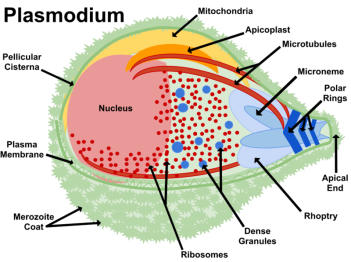 Image drawn from Wikipedia. [Online] Available at: http://upload.wikimedia.org/wikipedia/commons/f/fa/Plasmodium.png
Image drawn from Wikipedia. [Online] Available at: http://upload.wikimedia.org/wikipedia/commons/f/fa/Plasmodium.png
Malaria (Plasmodium) is caused by a sporozoan parasites of the genus Plasmodium which is only able to divide once inside the host cell. It is a tropical disease spread by mosquitoes. Malaria is often misdiagnosed as being influenza, viral hepatitis, epilepsy and viral encephalitis.
Infection and spread
Infection is caused by Sporozites from the saliva of a biting anophelene female mosquito. Sporozites travel to the bloodstream or the lymphatic system of the recipient. They then migrate to the liver cells where they feed, grow and asexually reproduce. A deadly infection can ensue following just one bite.
Yep—need changes fast? We’ll jump on your paper and polish it up in hours, fixing whatever needs tweaking so it’s ready to submit with zero stress. Just let us know what’s off, and we’ll make it right, pronto.
Life cycle of Malaria (Plasmodium) 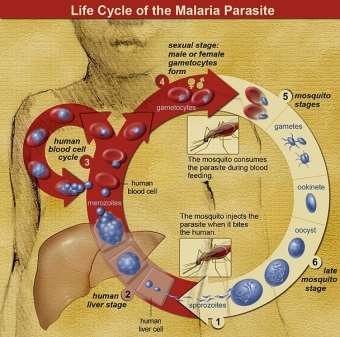 Image drawn from wikipedia. [Online] Available at: < http://upload.wikimedia.org/wikipedia/commons/9/9a/Life_Cycle_of_the_Malaria_Parasite.jpg>
Image drawn from wikipedia. [Online] Available at: < http://upload.wikimedia.org/wikipedia/commons/9/9a/Life_Cycle_of_the_Malaria_Parasite.jpg>
Symptoms
Symptoms usually occur with one to two weeks of being bitten. Symptoms include high fever, muscle pains, vomiting and diarrhea. In extreme life-threatening cases patients fall into a coma caused by cerebral malaria and can also suffer renal failure.
Treatment
The WHO, advocate the use of a combination of two or more different classes of anti-malarial drugs to fight the disease. Patients should immediately be transferred to the highest level of care available. Blood glucose levels should be checked regularly especially in children, pregnant women and in the severely ill patients.
Prevention
Sure thing! We’ll whip up a clear outline to map out your paper’s flow—key points, structure, all of it—so you can sign off before we dive in. It’s a handy way to keep everything aligned with your vision from the start.
Personal precautions aimed at reducing exposure to mosquitoes (wearing long sleeves and trousers) staying inside after dusk, mosquito nets sprayed with insect repellant and chemoprophylaxis. Travelers are advised to begin taking malaria prophylaxis one week before travel and continue for 4 weeks after return.
Word count: 235
Image drawn from Molecular expressions. [Online] Available at: < http://micro.magnet.fsu.edu/cells/viruses/influenzavirus.html>
Influenza is an RNA virus with a segmented genome. Influenza epidemics and endemics occur from the A-C virus groups.
Infection and spread
Influenza is transmitted via the respiratory tract spread from person to person through coughs and sneezes. It can also be spread by touching an infected surface and then touching the eyes or mouth. Someone can be infectious even before they have begun to show symptoms.
 Image drawn from Quick flu diagnostic tests. [Online] Available at: < http://www.geldin.com/wp-content/uploads/2013/12/Flu-sumptoms.jpg>
Image drawn from Quick flu diagnostic tests. [Online] Available at: < http://www.geldin.com/wp-content/uploads/2013/12/Flu-sumptoms.jpg>
Absolutely—we’ll weave in sharp analysis or eye-catching visuals like stats and charts to level up your paper. Whether it’s crunching numbers or designing a graph, our writers make it professional and impactful, tailored to your topic.
Symptoms
Symptoms are similar to the common cold though the respiratory symptoms are more serious. Fever, lethargy and myalgia are also common features.
Treatment
Patients are advised to stay at home and keep hydrated and warm and to contact their GP if complications occur. New treatments such as the neuraminidase inhibitor oseltamivir may reduce the duration of symptoms.
Prevention
A vaccine is available but it is only effective against previously isolated strains. The vaccine is therefore only offered to those in high risk groups, i.e asthmatics, the elderly and those with cardiac disease. Vaccines can cause the patient to suffer from symptoms of the flu though they are not going to be as severe as a full blown flu virus infection.
Our bodies are constantly under attack, every second of everyday, our immune systems do not rest. In order for pathogens to penetrate the body they must first encounter a number of physical and biochemical barriers through active or passive means.
Our first lines of defence from invasive microbes include the epidermis and keratinocytes of the skin. Other physical barriers include mucous membranes which line all of the body’s cavities which come in to contact with the open environment, such as the respiratory, gastro-intestinal and urogenital tracts. Goblet cells within the mucous membrane epithelium secrete an estimated 4 litres of mucous a day. In the respiratory tract the mucous traps inhaled bacteria, fungi and other particles. Also within the respiratory tract are millions of hairs (cilla) lining the airways, which help to keep the passageways clear of debris. Mucosal surfaces of the moist epithelium allow the exchange of molecules within the environment whilst also resisting microbial invasion. The urinary tract itself is a physical barrier to pathogens in a similar way the respiratory tract is, it expels in an outward movement. Urination works to inhibit the movement of microbes from the environment up into the kidneys and bladder. The washing action of tears and saliva prevent attachment of microbes to the epithelial surfaces.
Our skin also has a role as a chemical barrier against pathogens as sweat glands secrete oils, some of which are slightly acidic which inhibit the growth of some bacteria. The stomach, urinary tract and tear ducts also play a roll in the chemical barrier as they all have antimicrobial properties, enzymes which break down bacteria to help keep these areas free from infection.
We tackle each chunk with precision, keeping quality consistent and deadlines on track from start to finish. Whether it’s a dissertation or a multi-part essay, we stay in sync with you, delivering top-notch work every step of the way.
Once pathogens have penetrated our first physical lines of defence they are met by our innate immune system, our second line of defence, which we are born with. An example of your innate immune system at work is when you cut yourself and notice in a few hours that the site of the cut is red and swollen. This is a sign that white blood cells or leukocytes have rushed to the site, to help fight any infections and begin the healing process of the damaged tissue. Leukocytes patrol the tissues and organs of the body via the lymphatic and blood circulatory systems like the soldiers of the immune system. The most virulent of these cells is called a macrophage. They’re sole purpose is to search and destroy bacteria. They don’t just happen upon bacteria in the body the have sensors or receptors which are tuned to recognise “danger molecules”.
Lymphocytes are the cells involved in the adaptive immune response, specifically called T cells and B cells. The adaptive immune system is a defence system that can adapt to protect us against almost any invader. There are three main types of T cells, killer T cells, known as CTLs, helper cells and regulatory T cells. A large number of T cells are produced in the primary lymphoid organs/tissues, derived from stems cells in the bone marrow. Each T cell has receptors specific for only one antigen. T-cells which survive the selection process migrate to the peripheral lymphoid tissues where they complete their functional maturation and provide protection against invading microbes. B cells develop from hemopoietic stem cells primarily in the micro- environment of the foetal liver and, after birth in the bone marrow. There are two kinds of B cells B1 and B2. B & T cells are selected by specific antigens to go on to take part in an immune response. This process of selection is called the clonal selection. When B cells are activated by an antigen, sometimes with T cells help (helper cells), they multiply and mature into memory cells or plasma cells. Cytoxic T-cells or CTL’s play an integral role in killing virus infected cells. They release perforin and granzymes on to the surface of the target cells to induce direct cell death (apoptosis). T cells are not adept at recognising and so responding to free antigen. They can only see an antigen when it is presented to them. This process is called antigen presentation and is facilitated by carrier molecules, such as MHC’s (Major histocompatability complex proteins).
An antigen that can cause an allergic reaction is called an allergen. During an allergic reaction, histamines and other chemicals are released from mast cell granules, which increase capillary permeability so that fluid escapes from the capillaries in the tissue. This is the reason you get a runny nose and watery eyes when you have an allergic reaction. Histamine binds to two types of receptors on target cells H1 and H2. After binding to H receptors, histamine induces contraction of smooth muscle, increases vascular permeability and mucous secretion by goblet cells. Via H2 receptors, histamine increases gastric secretion, decreases mediator release by basophils and mast cells.
Word count: 816
|
Immunity Do You Follow Global Academic Rules?Yes—we’ve got it down! Our writers switch seamlessly between UK, US, Australian, or any other standards, matching your school’s exact expectations. Your paper will feel native to your system, polished and ready for wherever you’re studying. |
Natural (Innate) |
Acquired (Adaptive) |
|
|
Similarities: |
Acquired through the foetus during development Used to fight against microbes What is a progressive delivery and how does it work?Progressive delivery is a cool option where we send your paper in chunks—perfect for big projects like theses or dissertations. You can even pay for it in installments. It’s just 10% extra on your order price, but the perks are worth it. You’ll stay in closer touch with your writer and can give feedback on each part before they move to the next. That way, you’re in the driver’s seat, making sure everything lines up with what you need. It saves time too—your writer can tweak things based on your notes without having to redo huge sections later. |
Some antibodies transferred to the growing foetus through the placenta Also used to fight microbes and antigens |
|
|
Differences: |
Defends against any invading pathogen upon exposure I received some comments from my teacher. Can you help me with them?Absolutely! If your teacher’s got feedback, you can request a free revision within 7 days of approving your paper—just hit the revision request button on your personal order page. Want a different writer to take a crack at it? You can ask for that too, though we might need an extra 12 hours to line someone up. After that 7-day window, free revisions wrap up, but you can still go for a paid minor or major revision (details are on your order page). What if I’m not satisfied with my order? If your paper needs some tweaks, you’ve got that free 7-day revision window after approval—just use the “Revision” button on your page. Once those 7 days are up, paid revision options kick in, and the cost depends on how much needs fixing. Chat with our support team to figure out the best way forward. If you feel the writer missed the mark on your instructions and the quality’s off, let us know—we’ll dig in and sort it out. If revisions don’t cut it, you can ask for a refund. Our dispute team will look into it and figure out what we can offer. Check out our money-back guarantee page for the full scoop. Doesn’t improve following exposure to a pathogen Rapid response to pathogens First response generates long-lived memory cells |
Acquired throughout life, can be artificial due to vaccination. Responds to specific antigens on second exposure Immunity increases the more it is exposed to a pathogen Response only activated once specific T cells have been presented to a specific antigen, meaning the response is delayed. Has no immunological memory |
Word count: 103
|
Immunity |
Active |
Passive |
|
Similarities |
Acts immediately and eliminates pathogens before it is able to cause disease to the host |
Antibodies are transferred to the foetus via the placenta or colostrum Immunity can arise from a vaccination using antibodies though this is only short lived |
|
Differences |
Antibodies or lymphocytes are generated as a direct result of infection Long lasting immunological memory |
Immune system responds immediately as a pathogen enters the body Short lived immunization resulting from the transfer of antibodies. |
Word: 79
Word count:182/200
Anon, BBC, 2014. Defending against infection. [Online] Available at: http://www.bbc.co.uk/schools/gcsebitesize/science/aqa_pre_2011/human/defendingagainstinfectionrev1.shtml [Accessed 2nd Feb 2015]
Food U.S. Food and Drug Administration http://www.fda.gov/Food/FoodborneIllnessContaminants/CausesOfIllnessBadBugBook/ucm070492.htm
Alberts B, 2002. Introduction to Pathogens [Online] Available at: http://www.ncbi.nlm.nih.gov/books/NBK26917/ [Accessed 2nd Feb 2015]
Darling, D, 2013. Bacteria. [Online] Available at: http://www.daviddarling.info/encyclopedia/B/bacteria.html [Accessed 2nd Feb 2015]
Todar, K, 2012. Bacterial structure in relation to pathogenicity. [Online] Available at: http://textbookofbacteriology.net/structure.html [Accessed 2nd Feb 2015]
Yager, R, 1996. Protozoa: Structure, classification, Growth and development. [Online] Available at: http://www.ncbi.nlm.nih.gov/books/NBK8325/ [Accessed 3rd Feb 2015]
Warrell, D, 2012. Oxford Textbook of Medicine: Infection. Oxford, Uk, Oxford University Press. P365-71
Inglis, TJ 2003. Microbiology and Infection. London, UK, Churchill Livingstone P91-2
Image. Illustrator unknown. Life cycle of the malaria parasite. [online] Available at:http://en.wikipedia.org/wiki/File:Life_Cycle_of_the_Malaria_Parasite.jpg [Accessed 4th Feb 2015]
World health organisation, 2002. Prevention of hospital-acquired infections. [online] Available at: http://www.who.int/csr/resources/publications/whocdscsreph200212.pdf [Accessed 9th Feb 2015]
Anon. 2009. Proper hand washing tips to prevent infection. [Online] Available at: https://coolrain44.wordpress.com/2009/07/24/proper-hand-washing-tips-to-prevent-infection/ [Accessed 10th Feb 2015]
Anon, 2007. Immunology Lectures. [Online] Available at: http://www.medicine.tcd.ie/physiology/assets/docs/archived%2008_09/lecturenotes/Tuffery07/JS_DipEx/11.Immunology2.pdf [Accessed 19th Feb 2015]
Tags: Academic Paper Assistance, Affordable College Homework, APA Citation Assignment Help, Assignment Help AustraliaYou Want The Best Grades and That’s What We Deliver
Our top essay writers are handpicked for their degree qualification, talent and freelance know-how. Each one brings deep expertise in their chosen subjects and a solid track record in academic writing.
We offer the lowest possible pricing for each research paper while still providing the best writers;no compromise on quality. Our costs are fair and reasonable to college students compared to other custom writing services.
You’ll never get a paper from us with plagiarism or that robotic AI feel. We carefully research, write, cite and check every final draft before sending it your way.